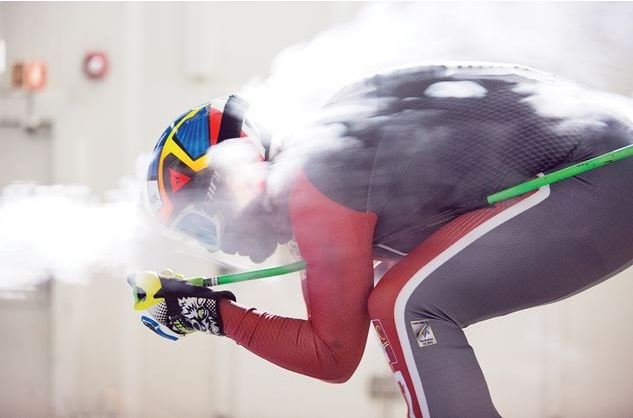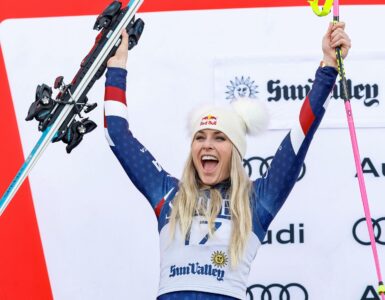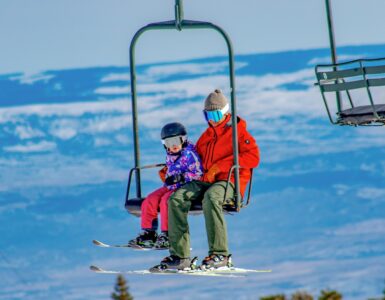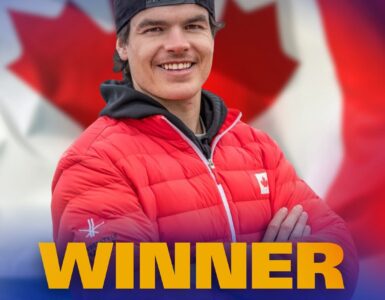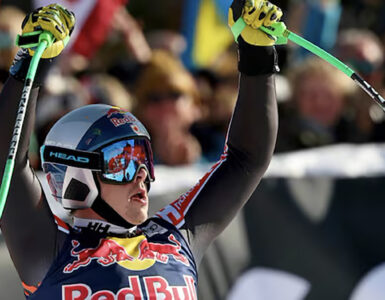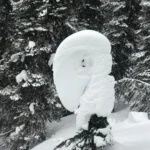Getting the greenlight from his handlers, Manuel Osborne-Paradis stepped onto his skis mounted atop a platform and the clicks echoed throughout the cavernous and nearly empty wind tunnel testing centre.
Dressed from head-to-toe in his downhill racing garb — helmet, suit, boots and poles — the Canadian Olympian looked to the phalanx of cameras to his left, lowered his goggles and then thread his hands through the loops on his poles.
As the cameras clicked, Osborne-Paradis crouched his body forward into the typical skier’s tuck position and waited for the winds to whip up at the ACE Climatic Wind Tunnel at the University of Ontario Institute of Technology on Sunday.
Slowly at first, the breeze began to blow directly on Osborne-Paradis, a hopeful for the 2018 Winter Games at PyeongChang in South Korea. As the turbulence increased, smoke was then used to illustrate how air flows around an athlete’s body as they cruise downhill at more than 80 mph.
For most of the day on Oct. 1, Alpine Canada athletes took turns in the wind tunnel where they tested new winter sports gear and clothing to measure the suits’ aerodynamic performance during tucks in advance of next February’s Olympic Games. The data gathered will be used to help determine the effectiveness of the suits during future competitions.
As well, the aerodynamic tests allowed the skiers to practise their skills ahead of the World Cup skiing season, which begins in late November.
“We want to make sure we’re on the right track,” said Martin Rufener, the athletic director of Canada’s alpine team.
Throughout the day, the women skiers — Marie Michele Gagnon and Val Grenier — focussed more on their positioning, explained Rufener.
“The girls were getting to learn about the quickest, fastest, best tuck position and the differences,” said the coach.
The men — Erik Guay and Osborne-Paradis — had spent plenty of time in wind tunnels before and leaned more towards learning about their new suits and how they can reduce drag while barrelling down mountain sides.
“We focussed more on the speed side with the suits and the aerodynamics and poles,” said Rufener. “We want to give them, in an Olympic year, the trust in us that we’re giving them the best materials we can for them.”
Essentially, the day’s testing allowed the athletes to try out their new suits and see how they fit and gauge aerodynamics in wind speeds ranging from 100 to 130 kmh and then make adjustments, said Rufener.
“We want to make sure we’re on top of everything,” said the coach, who has worked with Canada’s team for the past five years.
On the sidelines, Dr. Len Brownlie, a sports aerodynamicist, watched with a more technical eye in his bid to help the skiers become more streamlined and shave precious time off their runs. Over the past 30 years, Dr. Brownlie has worked with a wide range of athletes and sporting goods companies to optimize the aerodynamic drag of their positioning as well as equipment such as clothing and helmets.
“Any sport where there’s a stopwatch involved can benefit from reduced aerodynamic drag,” said Dr. Brownlie, listing off sports such as skiing, speed skating, luge, skeleton and bobsleigh.
“We want to allow them to reach their potential and downhill skiing is an example of this (testing),” he said. “A small reduction in drag can be the difference between reaching the podium or not.”
Trials such as the ones carried out at the ACE wind tunnel, stressed Dr. Brownlie, also provide the athletes with the assurance their teams are doing everything possible to get them on the podium.
“At the end of the day, it comes down to confidence when the athlete is at the starting line,” he said. “They have the confidence that this is one more box checked, one thing they don’t have to worry about when they get on the starting line. They know their suits and equipment are optimized and it allows them to focus on the race itself and not their equipment.”
by Chris Hall


